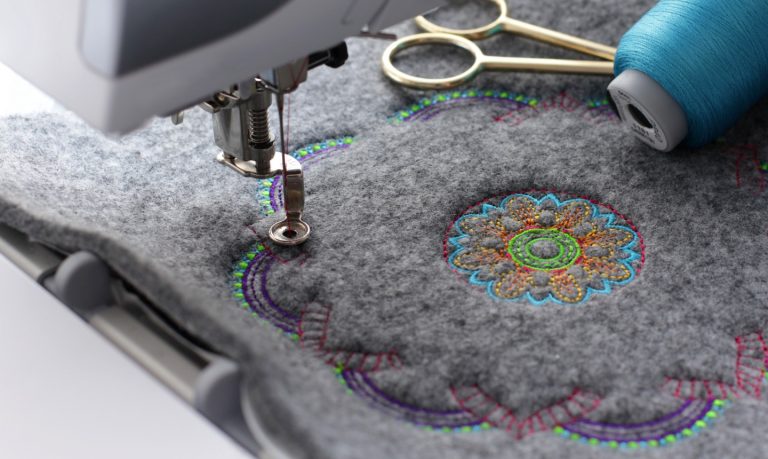Understanding the Needlework Digitizing Refine: Your Ultimate Guide
Needlework digitizing is a meticulous craft that needs precision and expertise to convert elaborate layouts into digital layouts for device needlework. As artisans begin on this journey to understand the embroidery digitizing procedure, an extensive understanding of the essentials establishes the structure for quality. Nonetheless, past the simple knowledge lies a realm of advanced software, specialized devices, and nuanced strategies waiting to be checked out. By diving into the nuances of digitizing, one can open a globe of innovative opportunities and elevate their needlework tasks to brand-new heights.

Comprehending Embroidery Digitizing Basics
Needlework digitizing fundamentals form the structure upon which elaborate styles are equated into machine-readable formats for exact stitching. This initial action in the embroidery digitizing process is important for guaranteeing that the last embroidered product is a faithful depiction of the original design. Comprehending needlework digitizing essentials entails grasping essential principles such as stitch kinds, sew direction, density, padding, and pull settlement.
Sew types play an essential duty in establishing the visual and textural end result of the embroidered layout. By selecting the ideal stitch kind, whether it be satin, fill, or running stitch, digitizers can achieve the wanted effect and improve the total high quality of the needlework. Additionally, sew instructions influences the flow and measurement of the style, while density identifies the spacing and protection of the stitches.
Additionally, rug stitching supplies stability to the design by safeguarding the textile and protecting against distortion during the embroidery procedure. Pull payment is one more necessary factor to consider to counteract the natural propensity of fabric to contract when stitched. Understanding these needlework digitizing fundamentals is fundamental for developing professional-quality stitched products.
Choosing the Right Digitizing Software
Choosing the ideal digitizing software application is an essential choice that dramatically impacts the performance and quality of the embroidery digitizing process. Digitizing for Embroidery. When selecting the best digitizing software application, it is crucial to consider elements such as the intricacy of designs you intend to develop, the user-friendliness of the software program, the degree of consumer assistance supplied, and the compatibility with your embroidery machine
There are numerous digitizing software program options offered out there, ranging from standard programs for newbies to sophisticated software program for specialist digitizers. Some popular options include Wilcom EmbroideryStudio, Hatch Needlework Software Application, and PulseID. These software use a vast variety of devices and attributes to assist you produce elaborate layouts effortlessly.
Prior to making a choice, it is advisable to discover the different software options via cost-free tests or trials to identify which one finest matches your requirements. Furthermore, reviewing testimonials and seeking referrals from seasoned digitizers can supply important understandings into the staminas and weaknesses of each software (Digitizing for Embroidery). By thoroughly examining your needs and comparing the functions of various digitizing software program, you can make an informed choice that improves your embroidery digitizing operations
Digitizing Devices and Techniques

Optimizing Style Settings for Embroidery
Grasping the ins and outs of design setups is fundamental in attaining ideal results in the needlework digitizing procedure, building upon the structure laid by understanding digitizing tools and strategies. When optimizing style setups for embroidery, it is crucial to consider variables such as stitch type, density, padding, draw payment, and enrollment. Registration settings straighten different aspects of the layout accurately, preserving total layout integrity.

Troubleshooting Common Digitizing Issues
When coming across common digitizing problems throughout the embroidery procedure, it is vital to comprehend the origin causes and carry look what i found out effective options promptly. One typical trouble is stitch density problems, where stitches might be too dense, creating the fabric to pucker, or also thin, resulting in spaces in the layout. Adjusting the stitch density setups in the digitizing software can assist settle this issue.
Another regular obstacle is string breaks during the embroidery procedure. This can take place due to different factors such as wrong tension settings, boring needles, or making use of low-quality string. Making certain proper upkeep of the embroidery device, consisting of regular needle adjustments and tension modifications, can decrease the event of thread breaks.
Furthermore, layout registration errors can lead to misaligned components within the embroidery style. Checking the design positioning in the digitizing software and making needed changes Go Here before stitching can aid in avoiding this problem. By resolving these common digitizing problems immediately and efficiently, you can make certain a smoother embroidery process and top notch completed products.
Verdict
To conclude, grasping the needlework digitizing procedure calls for a strong understanding of the basics, the ideal selection of software program, and expertise of tools and methods. Maximizing design settings and troubleshooting common digitizing concerns are critical action in guaranteeing premium embroidery results. By following these steps carefully, one can accomplish precision and effectiveness in the digitizing process.